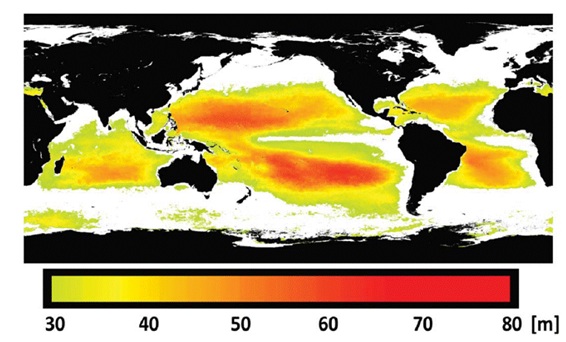研究内容1:海洋光学与卫星海洋学
(1)水体光场特性现场测量方法;光场特性与水环境的关系。
(2)水体光学活性成分的光学特性与生物/化学参数的内在联系,重点在浮游植物;从而发展水体生物/化学及其他环境参数的遥感算法。
(3)应用光学遥感产品,结合红外、散射、高度计遥感产品,研究区域及全球尺度物理-生物地球化学耦合及其与全球变化的关系。

Fig. 1 (a) close-up view of phytoplankton absorption coefficient at 443 nm (Aph) in the nearshore water in May–August;
(b) The interannual variation of Aph, percentage of valid retrievals and alongshore wind stress anomaly in the
area of Hanjiang River estuary in June during 2003-2009 and the MEI.

Fig.2 Penetration depth of solar irradiance (sun at zenith) at 360 nm in the global ocean, as gauged by 10% of the surface
light ( Z(360) 10%). Black: land or ice; white: waters with Kd(412) > 0.05 m -1 and are masked out here.
研究内容2: 海洋遥感图像处理与信息提取
(1)遥感图像智能处理技术及其在海洋领域的应用,重点在SAR遥感影像的智能解译。
(2)点云数据处理技术及其在海洋领域的应用。
(3)空间大数据的可视分析及其在海洋领域的应用。

Fig. 3 Subsets of real RADARSAT-2 SAR sea-ice imagery used for testing.